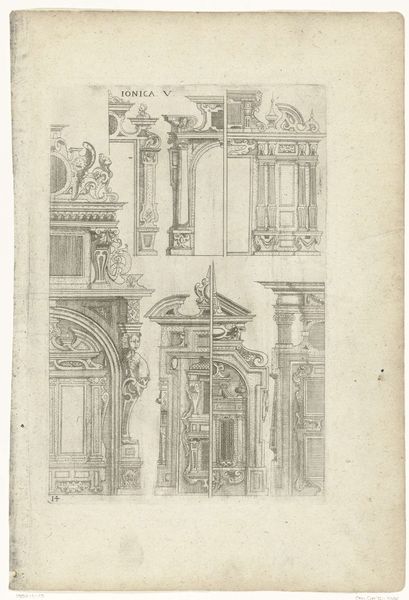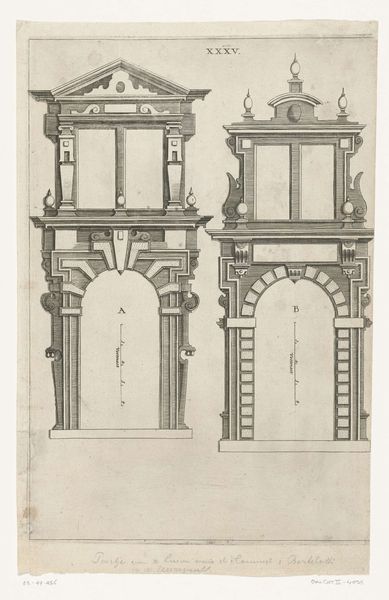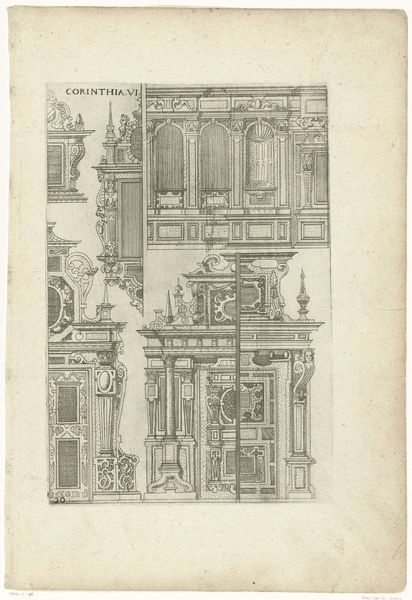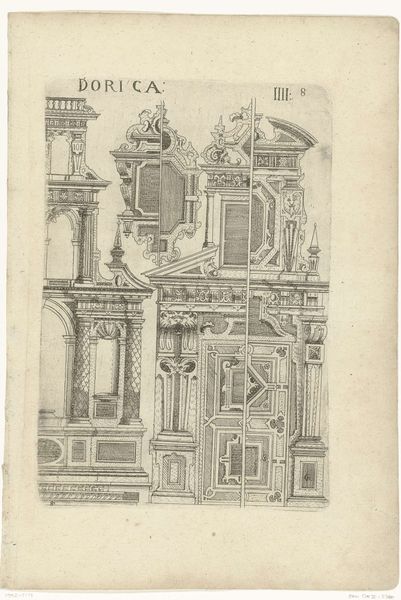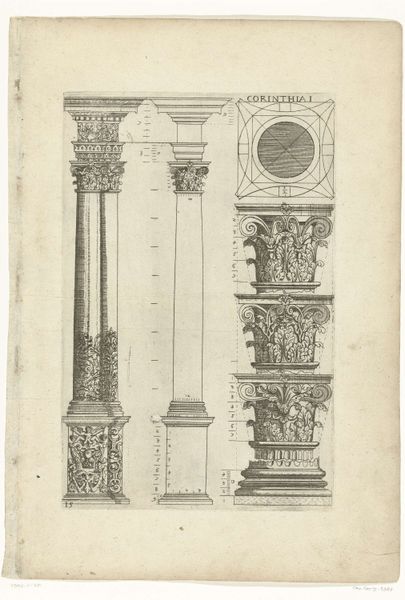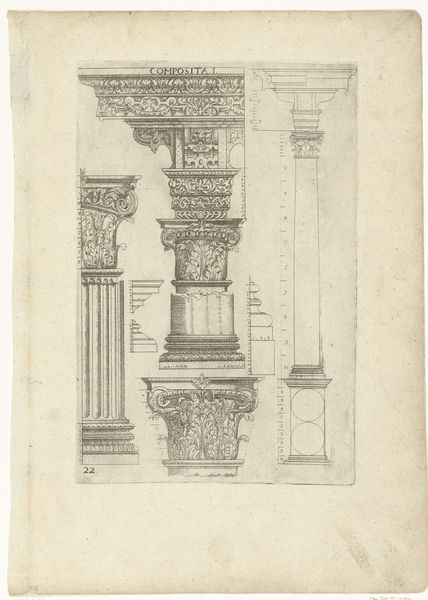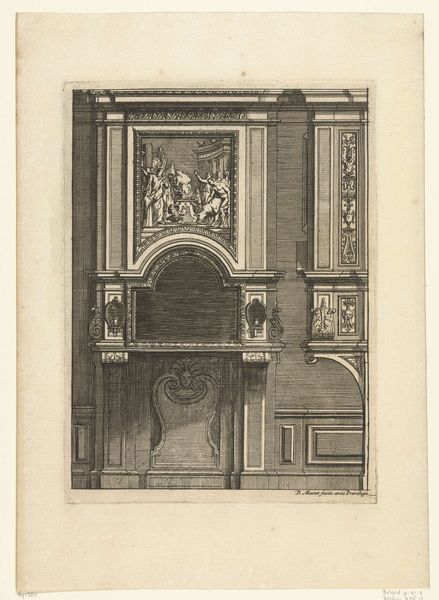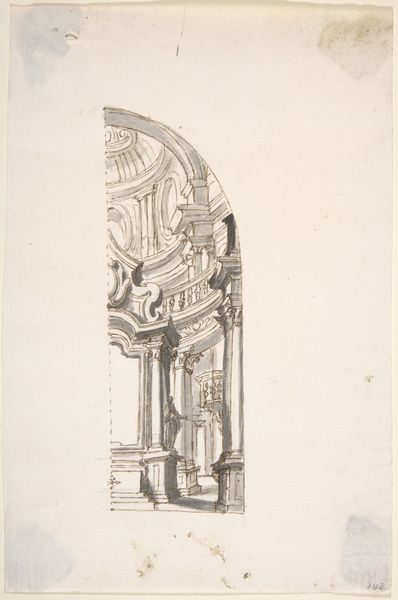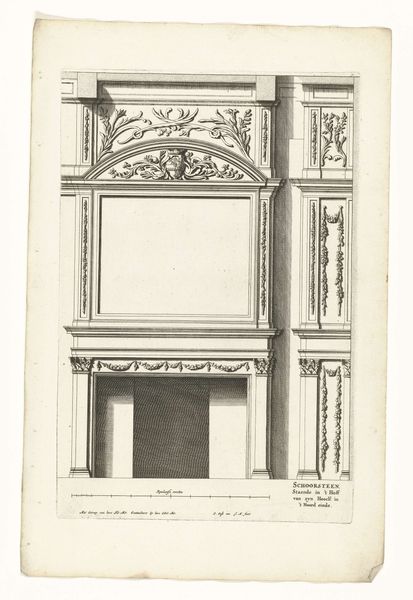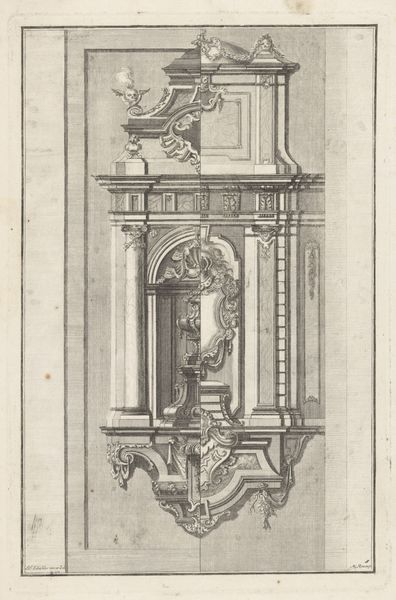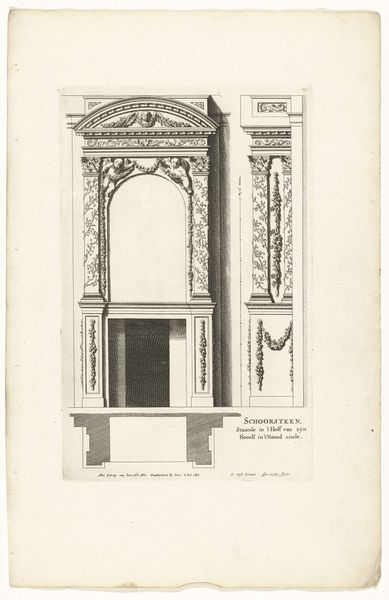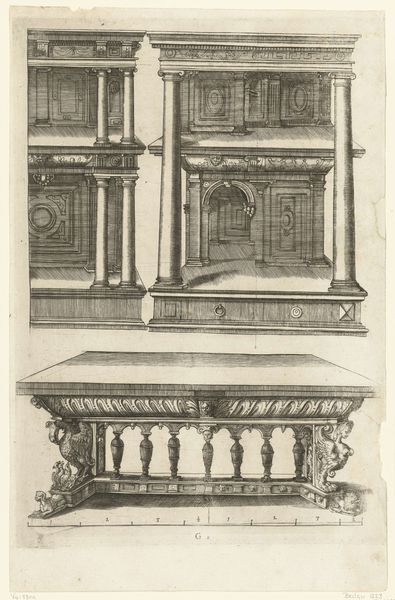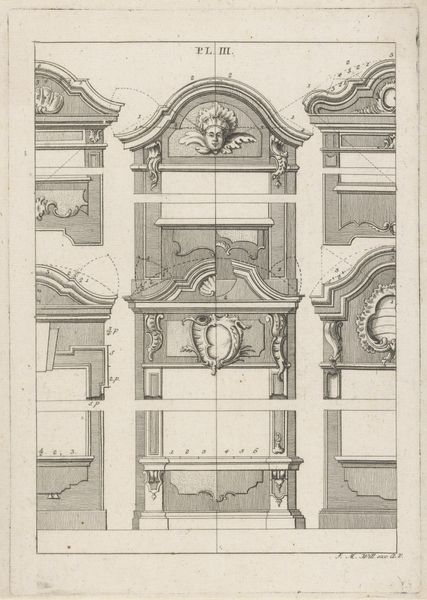
drawing, paper, ink, pen, engraving, architecture
#
drawing
#
aged paper
#
toned paper
#
light pencil work
#
baroque
#
pencil sketch
#
old engraving style
#
paper
#
personal sketchbook
#
ink
#
geometric
#
pen-ink sketch
#
pen work
#
sketchbook drawing
#
pen
#
sketchbook art
#
engraving
#
architecture
Dimensions: height 289 mm, width 185 mm
Copyright: Rijks Museum: Open Domain
Curator: Here we have “Twee halve epitafen en twee halve altaarstructuren,” or “Two Half Epitaphs and Two Half Altar Structures,” a drawing dating back to 1610. It's rendered in pen, ink, and pencil on paper by the artist Gabriel Kramer. Editor: My initial reaction is of a formal, almost austere, composition, despite the baroque detailing. The precise linework emphasizes structure, but there's a ghostly quality, maybe because of the aged paper. Curator: Exactly. Kramer presents fragmented architectural designs, perhaps studies for larger projects. Notice the use of classical motifs: columns, arches, and decorative carvings. The Corinthian capitals denote sophistication, suggesting an intended setting within a high ecclesiastical or aristocratic environment. Editor: It speaks to the culture of the time. The epitaphs hint at mortality, at a very structured remembering of those who had the right kinds of status. The imposing altar structures are almost intimidating assertions of power, rendered even more stark by their incomplete nature. We only get part of the picture, literally and figuratively. Curator: Indeed, the incomplete nature opens interpretive possibilities. Are these representations of actual structures or imaginative proposals? Kramer provides glimpses into the cultural importance of death and faith during that era. Architectural symbols communicated piety and power, especially within family lineage and divine spaces. Editor: What intrigues me is the power of the fragment. By not showing us the complete altar or epitaph, Kramer highlights the constructed nature of both remembrance and religious authority. They become objects of scrutiny. Are they as solid as they appear, or are they facades? Curator: Perhaps the incompleteness alludes to the impermanence of worldly power and the ever-present reminder of death. These designs freeze fleeting earthly grandeur. We're forced to consider the transient nature of human endeavor, a prevalent theme in Baroque art. Editor: And consider who benefits from these structures. Altars and epitaphs cement hierarchies. Kramer's rendering implicitly questions the status and values that such displays serve to perpetuate. What remains left unsaid is so powerful. Curator: Reflecting on it, I find that this drawing is very poignant, both structurally sound and profoundly contemplative. Editor: I see how it reveals those very delicate balances—offering reverence and a sharp reminder that material and symbolic power come at a cost.
Comments
No comments
Be the first to comment and join the conversation on the ultimate creative platform.

